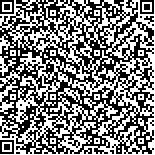| 摘要: |
| 当前用于纤维化治疗的方法很少且疗效有限,为进一步了解纤维化的消退机制以发现潜在的治疗靶点。从Gene Expression Omnibus(GEO)数据库中选取了三个具有代表性的小鼠肝、肾、肺纤维化样本的mRNA数据集,使用GEO2R工具和Venn分析识别了差异表达基因(Differentially Expressed Genes, DEGs)。通过Webgestalt在线工具对DEGs进行基因功能富集。蛋白质-蛋白质相互作用(Protein-Protein Interactions, PPI)网络是由STRING数据库生成的。然后利用CytoHubba插件探索了关键基因,分别选取了三器官共有DEG和肝特异性DEG中MCC (Maximal Clique Centrality)得分最高的前10个作为关键基因。研究中整合分析了基于小鼠模型的肝-肾-肺纤维化的数据集,GSE36066和GSE97546用于第一轮的DEG分析,由于研究除了探究三种器官纤维化共有差异基因,也进一步探究了肝纤维化特有关键基因,所以引入另外一个肝纤维化数据集GSE55747用于验证分析。结果识别出58个肝肺肾纤维化共有DEG和 85个肝纤维化特异性DEG。功能富集分析表明,共有DEG主要在免疫反应和炎症反应过程中富集。肝纤维化特有DEG与脂质和脂肪酸代谢过程有关。之后通过PPI网络选择了20个关键基因。为了评估这些关键基因成为潜在靶点的可能性,进一步分析了它们的成药性(Druggability)。得出以下结论:TYROBP,FCGR3B,ALOX5AP和CD14或可成为纤维化治疗的潜在靶点,CYP8B1和UGT2A3则可能与非酒精性脂肪性肝病(Non-alcoholic Fatty Liver Disease, NAFLD)或非酒精性脂肪性肝炎(Non-Alcoholic Steato-Hepatitis , NASH)相关。对于基因FCGR1B,C1QB,LY86和CD53,目前没有直接的研究证据表明其与纤维化相关,需要进一步验证它们在纤维化发生过程中的功能。 |
| 关键词: 纤维化 数据挖掘 基因表达 靶点 |
| DOI:10.12113/202103006 |
| 分类号:Q343.1 |
| 文献标识码:A |
| 基金项目: |
|
| Identification of liver-renal-lung fibrosis correlated hub genes by data mining |
|
YAN Huifang
|
|
(School of Statistics, Renmin University of China, Beijing 100872, China)
|
| Abstract: |
| There are few therapies for fibrosis and the efficacy is limited. Therefore, there is an urgent need to further understand how fibrosis may regress and to identify potential therapeutic targets. In this study, three representative mouse mRNA expression datasets on liver, kidney, and lung fibrosis samples were downloaded from the Gene Expression Omnibus (GEO). The differentially expressed genes (DEGs) were identified using GEO2R and Venn analysis. Gene functional enrichments were performed on the DEGs using Webgestalt online tool. Protein-protein interaction (PPI) network was generated by STRING database. Hub genes were explored with the CytoHubba plugin, and the ten DEGs with the highest (maximal clique centrality)MCC score in common DEGs of three organs and liver specific DEGs were selected as hub genes. In the study, an integrated analysis of liver-renal-lung fibrosis datasets based on mouse model was conducted. GSE36066 and GSE97546 were applied for first round DEGs analysis. As the study not only discovered common DEGs of fibrosis in three organs, but also investigated the liver fibrosis specific DEGs, another liver fibrosis dataset GSE55747 was involved for validation. Results showed that 58 common DEGs were identified for liver-lung-renal fibrosis, and 85 specific DEGs for liver fibrosis. Functional enrichment demonstrated that the common DEGs were mainly enriched in the immune response and inflammatory response process. While the liver fibrosis specific DEGs were related with the lipid and fatty acid metabolic process. Then 20 hub genes were selected with PPI networks. The druggability was further evaluated towards the hub genes so as to provide potential targets. The study provides following conclusions: TYROBP, FCGR3B, ALOX5APand CD14tend to be the fibrosis therapeutic targets, and CYP8B1and UGT2A3are potentially correlated with non-alcoholic fatty liver disease(NAFLD) or non-alcoholic steato-hepatitis(NASH). While for genes FCGR1B, C1QB, LY86,and CD53,there is no research evidence to show their direct correlation with fibrosis, and further validation on their functions in the fibrogenesis is needed. |
| Key words: Fibrosis Data mining Gene expression Target |






